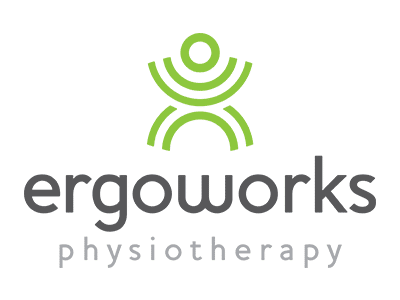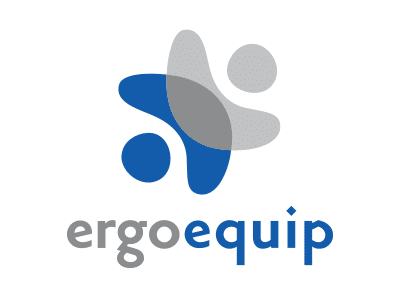Top 5 Mistakes to Avoid During an Ergonomic Assessment

Ergonomic assessments are a crucial part of maintaining a safe, comfortable, and productive workplace. Whether you’re working from a bustling CBD office or a quiet home in the suburbs, an effective ergonomic assessment can help prevent injuries, improve posture, and boost employee wellbeing.
However, many businesses and individuals unknowingly make mistakes during these assessments that reduce their effectiveness. At Ergoworks Consulting, we’ve seen it all — and we’re here to help you avoid the most common pitfalls.
Here are the top 5 mistakes to avoid during an ergonomic assessment and how to get it right the first time.
1. Skipping a Customised Approach
One size does not fit all when it comes to ergonomics. A common mistake many organisations make is using a generic checklist or a standardised assessment tool that doesn’t account for individual needs, body types, job roles, or work environments.
In Australia, with diverse industries ranging from mining and manufacturing to tech and education, every job comes with unique physical demands. An effective ergonomic assessment should be tailored to the specific person and task, considering factors like:
- Height, reach, and physical limitations
- Type of equipment used
- Duration of tasks
- Environmental factors (lighting, noise, temperature)
Ergoworks Consulting ensures each assessment is fully customised, whether for a home office in Melbourne or a corporate setting in Sydney. This approach helps avoid generic solutions that don’t resolve ergonomic issues.
2. Ignoring Employee Feedback
Another major misstep is failing to listen to employees during the assessment. They’re the ones sitting in that chair or lifting that equipment every day — they know where the pain points are. Ignoring their input can result in ineffective recommendations and low compliance with changes.
During an ergonomic assessment, it’s essential to:
- Ask employees about discomfort or repetitive strain symptoms
- Involve them in the evaluation of workstation setups
- Encourage open discussion about the challenges they face
A collaborative approach not only results in better solutions but also increases buy-in when it’s time to implement ergonomic adjustments.
If you’re unsure how to engage your team, contact us at Ergoworks Consulting — we provide on-site and virtual assessments with a strong focus on employee involvement.
3. Overlooking the Importance of Training
Providing someone with an ergonomic chair or sit-stand desk is a great start — but without training, it can be completely ineffective.
A common mistake is assuming that simply making changes to the physical setup will solve all ergonomic problems. In reality, employees need to understand how to:
- Adjust their chairs correctly
- Alternate between sitting and standing
- Maintain proper posture throughout the day
- Take regular micro-breaks to reduce fatigue
Without this knowledge, even the best-designed workstation can lead to discomfort or injury. That’s why ergonomic education is a critical component of any ergonomic assessment process.
At Ergoworks Consulting, we don’t just make adjustments — we teach people how to use their workspace effectively, giving them the tools to stay healthy long-term.
4. Focusing Only on Office Setups
When people hear the word “ergonomics,” they often picture an office desk. However ergonomic risks can exist in any workplace — from retail and healthcare to construction and hospitality.
Focusing only on office workstations means missing opportunities to prevent musculoskeletal injuries in more physically demanding roles. For example:
- Nurses lifting patients
- Warehouse workers handling packages
- Chefs standing for long hours in a tight kitchen
Every task and environment should be assessed for ergonomic risks. A comprehensive
assessment goes beyond the desk and includes:
- Manual handling practices
- Movement and workflow analysis
- Equipment layout and usage
- Environmental factors that affect posture and strain
If your business operates outside traditional office settings, contact us to find out how Ergoworks Consulting can help you assess and improve your entire operation.
5. Treating Ergonomics as a One-Time Task
Ergonomics is not a set-and-forget solution. Another big mistake businesses make is conducting a one-off ergonomic assessment and then never revisiting it.
Work environments, employee needs, and available technology are constantly evolving. Staff turnover, equipment upgrades, or shifting to hybrid work can all impact how ergonomic a space really is.
To maintain a safe and productive workspace, businesses should:
- Reassess workstations periodically
- Review setups when new equipment is introduced
- Update practices as roles or work locations change
- Schedule annual ergonomic reviews as part of WHS compliance
At Ergoworks Consulting, we offer ongoing support and repeat assessments to help you keep pace with changes in your organisation and ensure your ergonomic solutions remain effective.
A proper ergonomic assessment is an investment in your employees’ health, comfort, and productivity — but only if it’s done right. Avoiding these five common mistakes will help you get the most value from your assessment and create a safer, more supportive work environment.
To recap, steer clear of:
- Using a one-size-fits-all approach
- Overlooking employee feedback
- Skipping training and education
- Limiting your focus to office desks
- Treating ergonomics as a one-time fix
Whether you’re a business owner, HR manager, or remote worker, ensuring a quality ergonomic setup can save you money on injury claims, reduce absenteeism, and improve job satisfaction.
Need help getting started or reviewing your current setup? Contact us today at Ergoworks Consulting for a tailored, professional ergonomic assessment. We service clients across Australia and are committed to improving health and performance through smart ergonomic solutions.


